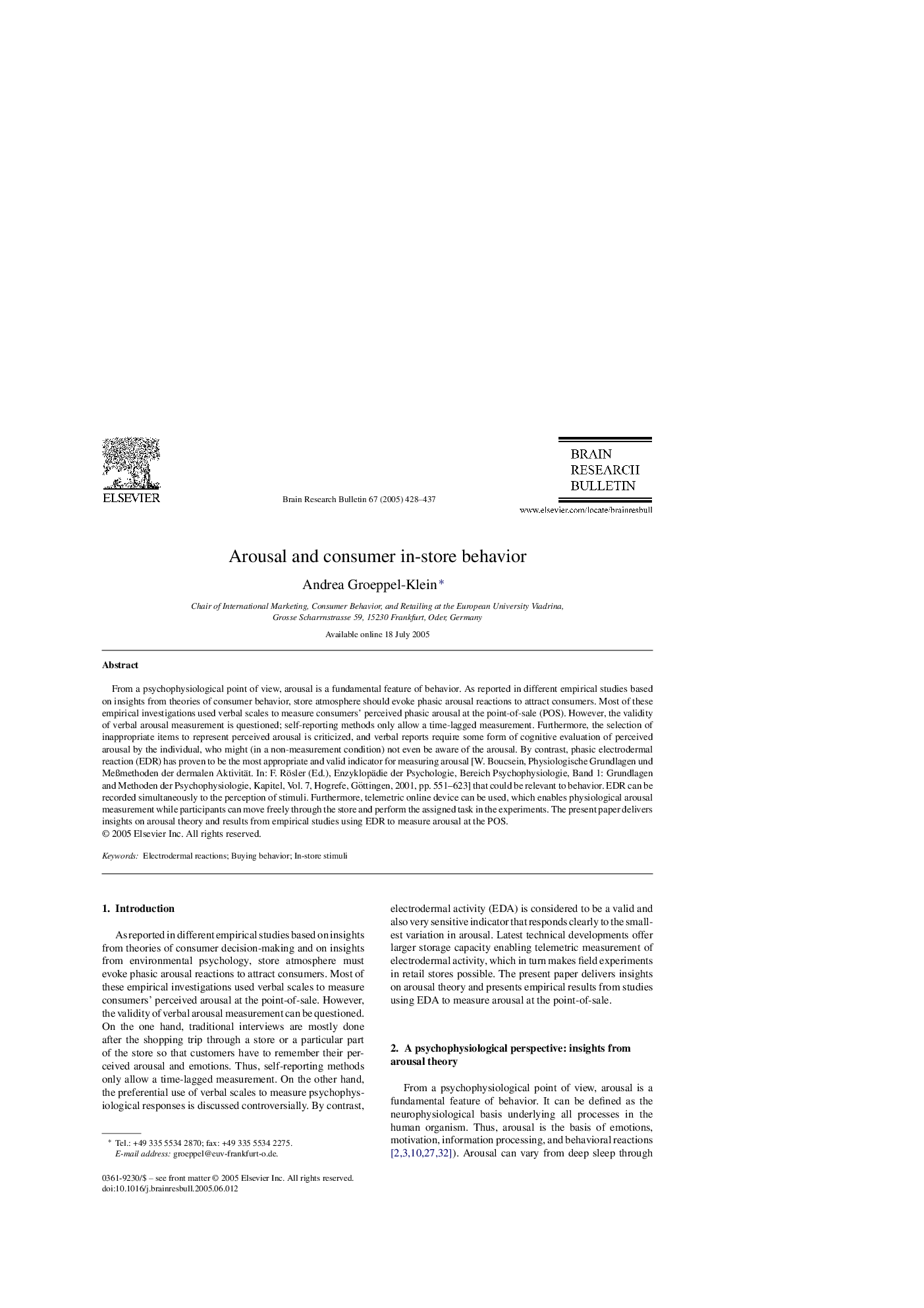| Article ID | Journal | Published Year | Pages | File Type |
|---|---|---|---|---|
| 9409409 | Brain Research Bulletin | 2005 | 10 Pages |
Abstract
From a psychophysiological point of view, arousal is a fundamental feature of behavior. As reported in different empirical studies based on insights from theories of consumer behavior, store atmosphere should evoke phasic arousal reactions to attract consumers. Most of these empirical investigations used verbal scales to measure consumers' perceived phasic arousal at the point-of-sale (POS). However, the validity of verbal arousal measurement is questioned; self-reporting methods only allow a time-lagged measurement. Furthermore, the selection of inappropriate items to represent perceived arousal is criticized, and verbal reports require some form of cognitive evaluation of perceived arousal by the individual, who might (in a non-measurement condition) not even be aware of the arousal. By contrast, phasic electrodermal reaction (EDR) has proven to be the most appropriate and valid indicator for measuring arousal [W. Boucsein, Physiologische Grundlagen und MeÃmethoden der dermalen Aktivität. In: F. Rösler (Ed.), Enzyklopädie der Psychologie, Bereich Psychophysiologie, Band 1: Grundlagen and Methoden der Psychophysiologie, Kapitel, Vol. 7, Hogrefe, Göttingen, 2001, pp. 551-623] that could be relevant to behavior. EDR can be recorded simultaneously to the perception of stimuli. Furthermore, telemetric online device can be used, which enables physiological arousal measurement while participants can move freely through the store and perform the assigned task in the experiments. The present paper delivers insights on arousal theory and results from empirical studies using EDR to measure arousal at the POS.
Keywords
Related Topics
Life Sciences
Neuroscience
Cellular and Molecular Neuroscience
Authors
Andrea Groeppel-Klein,
